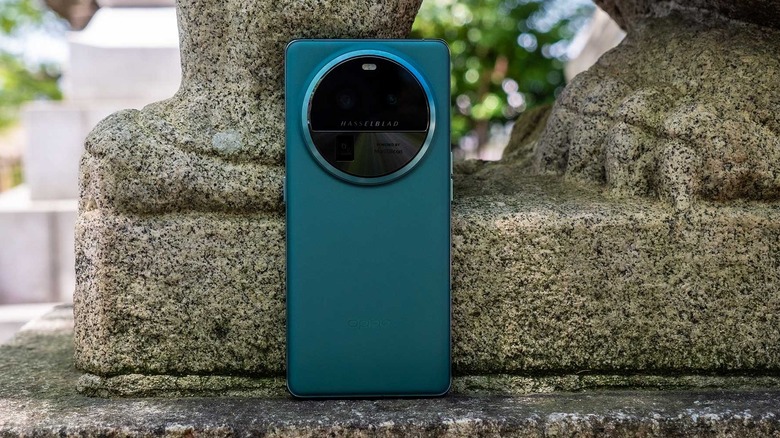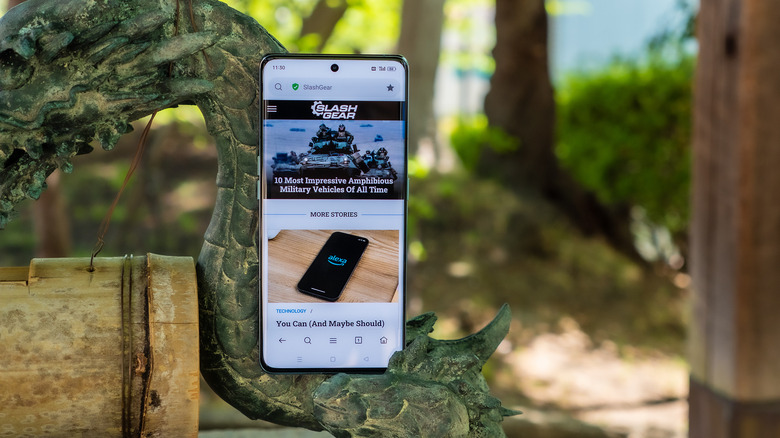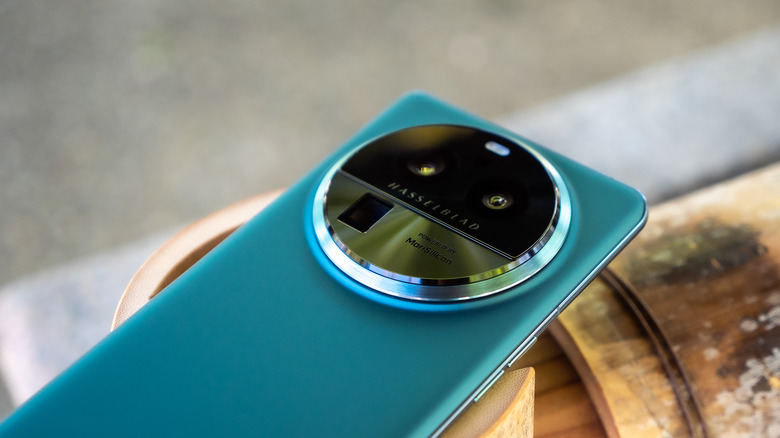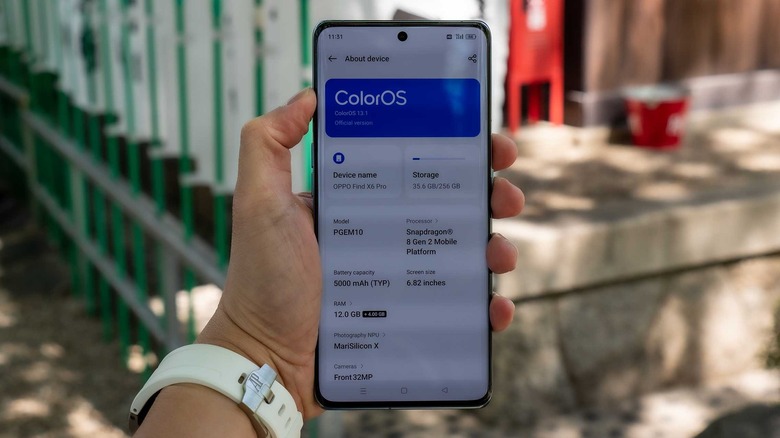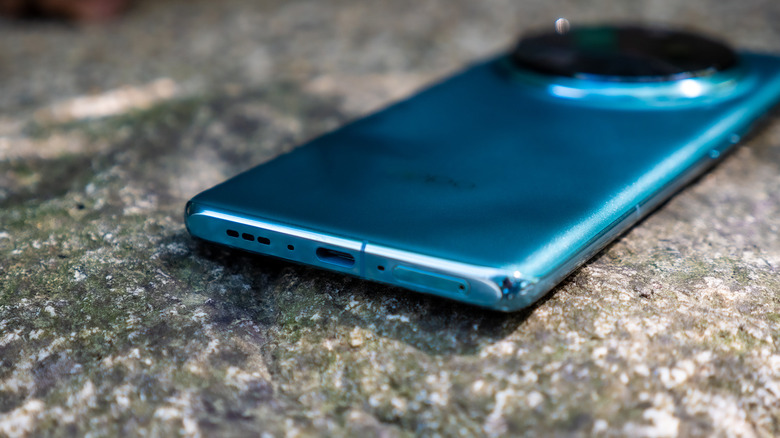Oppo Find X6 Pro Review: Camera Balancing Act
- High-performance hardware
- Three main cameras with impressive output
- Distinctive and stylish design
- Limited to the Chinese market
- ColorOS bloatware
- Aggressive battery management
- No Google Play
As the Oppo Find X6 Pro demonstrates, smartphone cameras are a big deal. It's probably not an exaggeration to say that cameras have become the most important feature of smartphones today. Users might be more forgiving of a 1080p screen or mid-range specs as long as they still perform well. An unimpressive camera, in contrast, is likely to get a hard pass from consumers. Marketing materials are filled with buzzwords that hype up phones' photography chops, and while megapixel counts aren't the sole criteria for good camera output, that doesn't mean they're not important.
With all other things equal, a 64MP sensor will definitely outdo a 16MP one, especially if the latter is from an older generation. Conversely, two 64MP cameras won't necessarily perform equally depending on the size of the sensor and its pixels, the lens, and other hardware in support of image processing.
For reasons of economy, a smartphone would have multiple cameras but not all of them are created equal. Most of the focus (no pun intended) is lavished on what is considered the "main" camera, often the one with a wide-angle lens. The other two or three usually have lower capabilities, though sometimes one would rise up to be more talented than the others with some special feature.
Sometimes, the other cameras even feel more like afterthoughts than actual feature bullet points, being placed there just for the sake of having a complete set. That's the kind of convention that the OPPO Find X6 Pro is trying to break away from with three cameras that have nearly identical specs.
But is it all just hype, and does the new flagship offer anything more? We give it a test to bring you the answers. Oppo provided an Oppo Find X6 Pro for the purpose of this review.
Design and Display
As smartphone cameras become more sophisticated and bigger, the space they occupy inside and outside becomes bigger as well. In some cases, putting the bump on a corner is no longer aesthetic or usable, especially since it could produce wobble when placed on a flat surface like a table. The Oppo Find X6 Pro's solution is to put the large circular camera right in the middle, making it the center of attraction and the center of gravity. Not only does it resemble a digital camera when held horizontally — it also distributes the balance more evenly.
The phone comes in three color options, two of which use the typical frosted AG glass. The more interesting variant, however, is the dual-tone brown vegan leather that also calls to mind typical camera designs. Although it moves away from the minimalist and gentle curves of its predecessor, the Oppo Find X6 Pro still retains a degree of elegance and class, even with its huge camera design. It tries to aim for some symmetry, even in the way the camera elements are laid out in the circle. That symmetry also extends to its ergonomics, with the phone striking the right balance of weight and thickness, making it feel great to hold in your hands.
While the phone's front isn't as extravagant as its back, it is no less impressive. It holds a 6.8-inch 120Hz OLED screen with a resolution of 3168x1440 pixels and a max brightness of 2500 nits, one of the brightest smartphone display panels in the world, and it definitely shows. The screen is vibrant, and its colors are lush. The panel is definitely responsive, and the high refresh rate is great for videos and gaming, at least those that support the max speed.
Performance and Battery
Oppo really pulled out all the stops when it comes to the Find X6 Pro's specs. There's the powerful Qualcomm Snapdragon 8 Gen 2 that's paired with 16GB of RAM. If that memory isn't enough, you can still borrow more from internal storage for virtual or expanded RAM. That said, the 512GB of storage is fixed, and you can't add a microSD card to get more. Also present is the Oppo MariSilicon X imaging NPU or Neural Processing Unit from last year, the silicon that takes care of both camera image processing as well as display performance.
Suffice it to say, the Oppo Find X6 Pro isn't lacking in raw power, and it runs smooth as butter, whatever you use it for. There's no lag in multi-tasking thanks to spacious memory, and heavy games are no problem for the phone. You might find apps sleeping unexpectedly, though, but that's more because of the operating system rather than a hardware flaw. The dual speakers get the job done well, but you wouldn't exactly call them great, either.
With all that power, it's not exactly surprising that the 5,000mAh battery takes a big hit. Despite its large size, you won't last more than 14 hours at most with regular use in 5G unless you turn on some optimizations and crank down the brightness. Oppo buffers this drawback with an extremely fast charging speed of 100W for wired and a whopping 50W for wireless. Of course, you need to be using sanctioned Oppo SuperVOOC chargers for those, so you won't be getting the same benefit if you're topping off using a power bank.
Multiple main cameras
The main attraction of the Find X6 Pro is, of course, its three main cameras. And no, that isn't a typo. What OPPO really means is that all three cameras have nearly identical specs, or at least all have 50MP sensors. The devil is in the details, of course, so there's definitely a bit of marketing hype to that claim. The front-facing camera isn't invited to that party, but its 32MP sensor is definitely plenty for professional-looking video conferences.
There is still a bit of inequality between the three "main" cameras, though. The 50MP wide camera has a 1-inch sensor from the acclaimed Sony IMX989, while the other two both use 50MP Sony IMX890 1/1.56-inch sensors, differing only in the type of lenses used. The idea behind this trio of cameras is that you don't have to compromise on quality just because you want an ultra-wide shot or a close-up. Switching between cameras is also less jarring since there is almost no change in quality, at least in theory.
Photo quality delivered
Fortunately, the Find X6 Pro also delivers on those promises in practice. The output of all three cameras results in vivid colors, wide dynamic ranges, correct white balance, and high levels of detail. Thanks to the large sensor of the wide camera, this is true even in low-light scenarios without having to resort to Night Mode. Part of this feat is thanks to the MariSilicon X NPU doing background work to improve image quality, and part of it is due to Hasselblad lending its expertise. The camera and lens maker also added a special Portrait Mode that recreates effects from the company's classic cameras, resulting in beautiful and more natural-looking bokeh shots.
It's also worth noting that OPPO has brought back the periscope-style lens that it pioneered and then dropped for some reason. The 50MP telephoto camera can reach 3x optical zoom with impressive results, with rich detail and low noise. Thanks to its large sensor, however, even digital zoom still ends up looking good compared to other telephoto cameras at the same zoom level. It's probably safe to say that the Find X6 Pro has the best telephoto camera on the market today.
User Experience
Although things seem to be looking up for the Oppo Find X6 Pro, there is one aspect where things take a downturn. While there is very little doubt that the phone has excellent hardware that lives up to expectations, the software is a different matter entirely. Oppo's latest flagship runs the latest ColorOS 13.1, which is thankfully based on Android 13 already. While there's nothing wrong with ColorOS itself, it's the version that's running on the Find X6 Pro that will be a problem for anyone living outside of China.
Since the phone isn't yet available in global markets, the particular flavor running on this phone is aimed at the Chinese market, with all the bloatware that's typical in that region. Of course, it also means that there's no Google Play support to speak of, at least not officially. This might be enough to chase away interested buyers, which is a shame because ColorOS is definitely one of the better Android experiences available.
ColorOS strikes a balance between performance and customization while presenting defaults that are both sensible and aesthetic while. Of course, users still have free rein over their phones' looks, and there's a dizzying amount of options they can tweak. Oppo has also been putting a lot of focus lately on experiences that go beyond just using the phone, aiming to increase awareness of global warming and helping to improve the user's well-being through relaxing soundscapes. Unfortunately, ColorOS also tends to be too aggressive in killing apps to prolong battery and optimize memory, but you can thankfully turn those off if they're not to your liking.
Final Thoughts
For many years now, Oppo has been promoting itself as an innovator in the mobile photography space, and it feels like the Find X6 Pro is the ultimate proof of that. Having three main cameras raises the bar and challenges the likes of Apple, Samsung, and Huawei in their dominance of camera benchmarks. After years of absence, the periscope lens that Oppo first launched has come home, and the MariSilicon X NPU continues to impress despite being more than a year old by now. Of course, as a smartphone, it doesn't disappoint either, with powerful hardware, a bright and colorful display, and a stylish design. It's by no means perfect, but there are also ways to solve or at least mitigate those small issues.
Unfortunately, the phone's biggest flaw goes beyond specs and features and is something that is trickier to solve. As of this writing, Oppo hasn't announced any plans to bring its latest flagship to global markets, though that could just be a matter of time at this point. The phone would have to undergo certifications in different markets, but that's nothing new to the company. The price in Oppo's online shop, which is around $1,020 (converted from ¥6999), could become a sticking point, but that figure isn't uncommon for premium phones such as this. It will definitely be a shame and a terrible missed opportunity if the Oppo Find X6 Pro remains chained to a single market, unable to shine gloriously for everyone to see and experience how smartphone cameras should be.
Meanwhile, if you're looking for a comparable smartphone available in the U.S., look no further than the OnePlus 11 5G, not least of all because OnePlus and Oppo are part of the same company.
